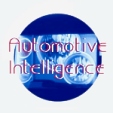
Automotive Intelligence - the web for automotive professionals and car enthusiasts
October 2, 2002
This Week:
-
The new Audi S4 - Supreme power and superior driving dynamics
-
The Chrysler Brand Continues to Build Momentum for 2003 at the Paris Motor Show
-
Ford Of Europe Sets Record Pace For New Product Introductions
-
Maybach at the Paris Motor Show: European premiere of the luxury saloons Maybach 57 and Maybach 62
-
Volkswagen Touareg - Start of a new off-road vehicle philosophe
-
BMW Develops Head-Up Display For Ralf Schumacher's F1 Helmet
-
Valeo advances driver comfort and confidence with detection systems contracts
© 1998 - 2007 Copyright
&
Disclaimer
Automotive Intelligence,
www.autointell.com
All Rights Reserved .
For questions please contact
editor@autointell.net
|
BMW Develops Head-Up Display For Ralf Schumacher's F1 Helmet World First From Silicon Valley Opens Up New Communication Paths And Enhances Safety
Williams F1 driver Ralf Schumacher's helmet and will enable a wide range of information and messages to be relayed to the driver. With the design of this "visual information window" BMW strives to continue to set new standards for safety in Formula One. Racing drivers will be able to receive information visually while paying full attention to the road. Aided by this innovative technology, the driver can be alerted, for example, to an accident on a certain stretch of the track or a patch of oil in a particular turn. "With this device, BMW has taken a further important step forward on the safety front," said Schumacher. The display system was devised by the BMW Technology Office, based in
Silicon Valley, in collaboration with DesignworksUSA in Newbury Park, CA,
Kopin Corp., a semiconductor manufacturer located in Taunton, Mass. and
German helmet manufacturer Schuberth. Tests are scheduled to be completed
later this year. |
|
|
|
This pioneering technology opens up an entirely new channel of communication between the pits and the driver. A module integrated into the helmet stores various messages and images in a data-set which can be called up from the pits and displayed to the driver. The mini head-up display projects the relevant "transparent" image through the visor. That image is level with the front of the car. The driver receives the information without being distracted from what is happening on the track. The BMW mini head-up display has a high-resolution true color display based on active matrix liquid crystal display (AMLCD) technology. The key function of the display is found in a unique lens element known as a free form prism (FFP). Thus the image is crystal clear. |
Formula One as an ideal application and test area
The mini head-up display enables the projection of any number of optical messages into the driver's direct field of vision. For Formula One testing, the miniature display was integrated into the chin cup of a modified Schuberth RF-1 racing helmet. Additional walls and padding were used in accordance with guidelines from the SNELL Foundation (the helmet safety organization). The system is located in the peripheral vision field of the driver's dominant eye. Thanks to the unique design, the information is projected into the driver's field of vision without his having to actually look at the display. "The eye very quickly gets used to this small spot and ignores it as if it were a tiny insect on the windscreen," explained Jürgen Brügl, project engineer at the BMW Technology Office in Silicon Valley.
With the help of the miniature display, the F1 driver is fed a wide array of information on the race and on safety precautions straight from the pits. It means the driver is constantly informed of his position in the race and can receive instructions from the pits during a race or in training, such as "go faster", "come into the box" or "oil in turn 2". He is kept up to date on flag signals and emergency procedures by means of messages such as "pit traffic" or "oil pump". Moreover, it allows the crew chief or instructor in the pits to send the driver a message through bi-directional telemetry. This information is relayed straight to the display. Similarly, information on the engine management (e.g. "oil pressure low") can be sent directly to the driver without having to go through the pits. It all helps to save precious time.
Within the ConnectedDrive philosophy of the BMW Group our goal is to transfer the head-up-display technology from Formula One into series production. With ConnectedDrive the BMW Group connects drivers with their vehicles and with the surrounding traffic management to increase safety, efficiency and driving comfort.
Network-style innovation management as the basis of technological progress
The integral head-up display was developed in the westernmost office of the BMW Group's Research and Innovation Center (FIZ), in Silicon Valley, in cooperation with the BMW Group's design studio DesignworksUSA and Kopin Corp. Since 1998, 16 associates - IT experts, logisticians, chemists and engineers from various specialist fields - have been working in the Technology Office towards a common objective, namely to ensure the fastest possible integration of innovative technologies into BMW cars. "Thanks to our Technology Office we are in a position to quickly harness the rapid developments in communications and information technology in Silicon Valley for our applications," said Dr. Burkhard Goeschel, BMW Group board member responsible for Development and Purchasing. The BMW Technology Office specializes in highly innovative, cutting-edge technologies.
(September 28, 2002)
| .
Homepage News Companies Management Publications Events Guestbook Search . |
